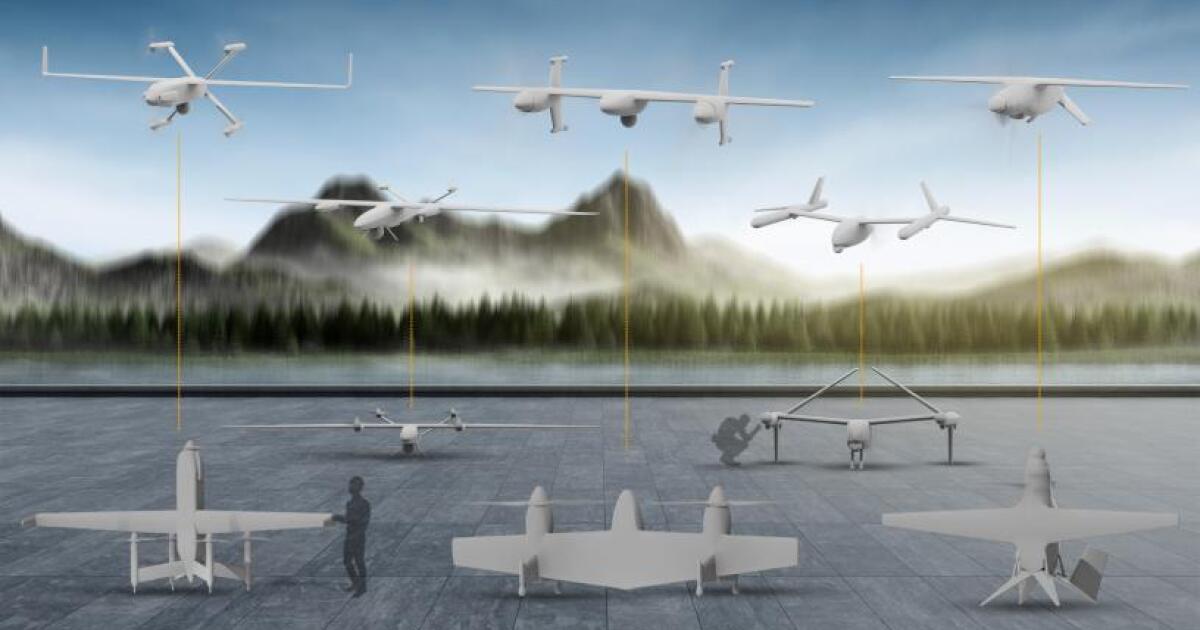An exceptionally odd clean energy project backed by Bill Gates has broken ground near Rock River, Wyoming, where a wind turbine that turns convention on its head will get a chance to prove its remarkable claim: wind power at 1/3rd of the cost.
Offshore wind turbines continue to get bigger and taller – indeed, they’re quite possibly the biggest machines that humanity has ever built with large moving parts. The 26-MW behemoth that Dongfang Electric Corporation is building, for example, will have three blades, each about six times the width of a Boeing 747, attached to a nacelle towering 607 ft (185 m) over the surface.
As these gargantuan blades swing through the top of their circle, they’ll top out at a 1,115 ft (340 m) altitude – and this is where they’ll generate peak power, because all else being equal, wind becomes stronger and steadier the higher you get from the surface – at least, when you’re fairly close to the Earth.
And you can bet your bottom dollar somebody’s working on a turbine with a diameter even bigger than Dongfang’s 1,107 ft (310 m), because the bigger your turbine gets, the bigger the swept area reward becomes for adding another bit of length at the ends of the blades.
So as energy giants like Dongfang tie themselves in knots to deal with the materials and logistics required by these mammoth wind turbines, it’s truly odd to watch Wyoming company Airloom going the opposite way.
Introduction to AirLoom Energy
Airloom’s technology involves a bunch of 33-ft long vertical wings, attached to a cable, running around an oval-shaped track that’s suspended about 82 ft (25 m) off the ground on a series of poles. Those are the numbers for a 2.5-MW commercial-scale version, anyway; thus far, the idea has only been tested at smaller scale.
The blades change orientation as they turn around at the ends of the oval, angling themselves for optimal power as they run down the long side sections, and power takeoffs harvest the linear motion from the cable to run generators.
There is absolutely no question: a traditional big, tall fan-on-a-stick turbine will have better access to high-quality wind. Airloom’s contention appears to be that this doesn’t matter, because energy is a money in, money out game, and its gear will be so much cheaper to install than great big turbines that it will deliver energy at a lower overall cost.

Airloom Energy
The 2.5-MW turbine setup described above, for example, could arrive on site loaded on a single truck, and you won’t need a massive crane (or one of these funky climbing cranes) to install it. In 2023, the company was claiming that an Airloom setup would cost about a tenth of what a three-blade horizontal-axis turbine of equivalent power does. Add in land, and a wind farm would be about a quarter the cost. Repairs and service would be a breeze, and much cheaper over the Airloom’s 30-year service life then anything you need to do on top of a huge turbine tower.
Thus, says Airloom, the all-important LCoE (Levelized Cost of Electricity) figure would be around one third as much as traditional wind – already one of the world’s cheapest forms of energy.
Well, I guess we’ll see. After a pretty quiet couple of years, during which the company managed to pull in another 13-odd million dollars in funding and DoD contracts, Airloom has now announced that it’s broken ground on a research and development site, where it will “build out its first utility-scale turbine.”

Airloom Energy
“Current energy technologies can’t meet the growing complexity and demand of the next decade,” says Neal Rickner, CEO of Airloom Energy, in a press release. “With growing electricity needs, we need more flexible systems that can be built quickly, and deployed anywhere at large scale. That’s the only way we’re going to achieve and maintain energy security and independence. Airloom’s proprietary, US-manufactured turbines do just that – replacing bulky, costly models with low-cost compact designs that generate more energy in less space. This groundbreaking marks a key milestone in validating our power curve and achieving essential cost efficiencies for wind energy.”
Annoyingly, the release gives precious little detail. Will this be the 50-kilowatt version with 3 m (10 ft) wings, running around a 45 x 22-m (148 x 72-ft) track with 5-m (16-ft)-tall towers they spec out in the video embedded above? Or the 250-kW version? Airloom isn’t saying. Nor is the company saying when it will be ready to show off, other than that it expects to “complete its pilot site build out ahead of commercial demos beginning in 2027.”

Airloom Energy
I guess this is one good thing about a nice super-cheap idea; it ought to be super-cheap to test. Not quick, though, apparently. And we’ll be very surprised if “utility scale” gets close to a megawatt in this instance.
We were skeptical about this one in 2023, and we remain skeptical today – albeit not quite as skeptical as CleanTechnica‘s Michael Barnard, who laid an absolute steamer on the idea back when it first came out of stealth. The investments involved, from companies including Bill Gates’ Breakthrough Energy and Chris Sacca’s Lowercarbon Capital, are relatively minor for the energy space, and perhaps they reflect a similar skepticism among VCs.
But we shall see… In just a few short years…
Source: AirLoom Energy








